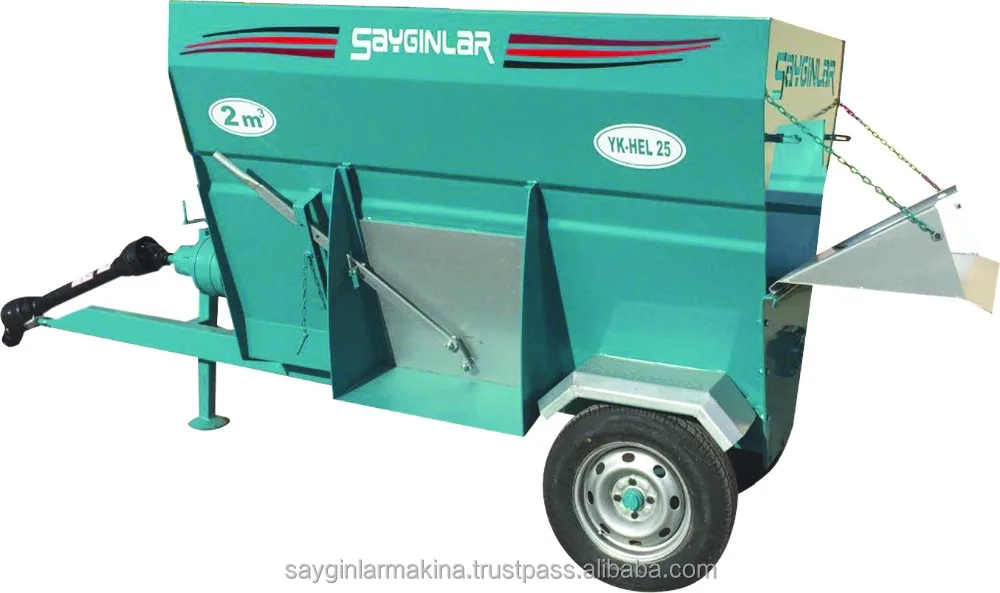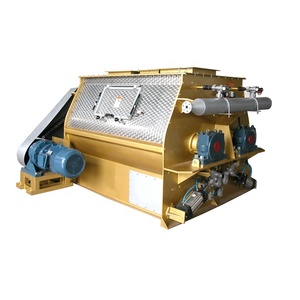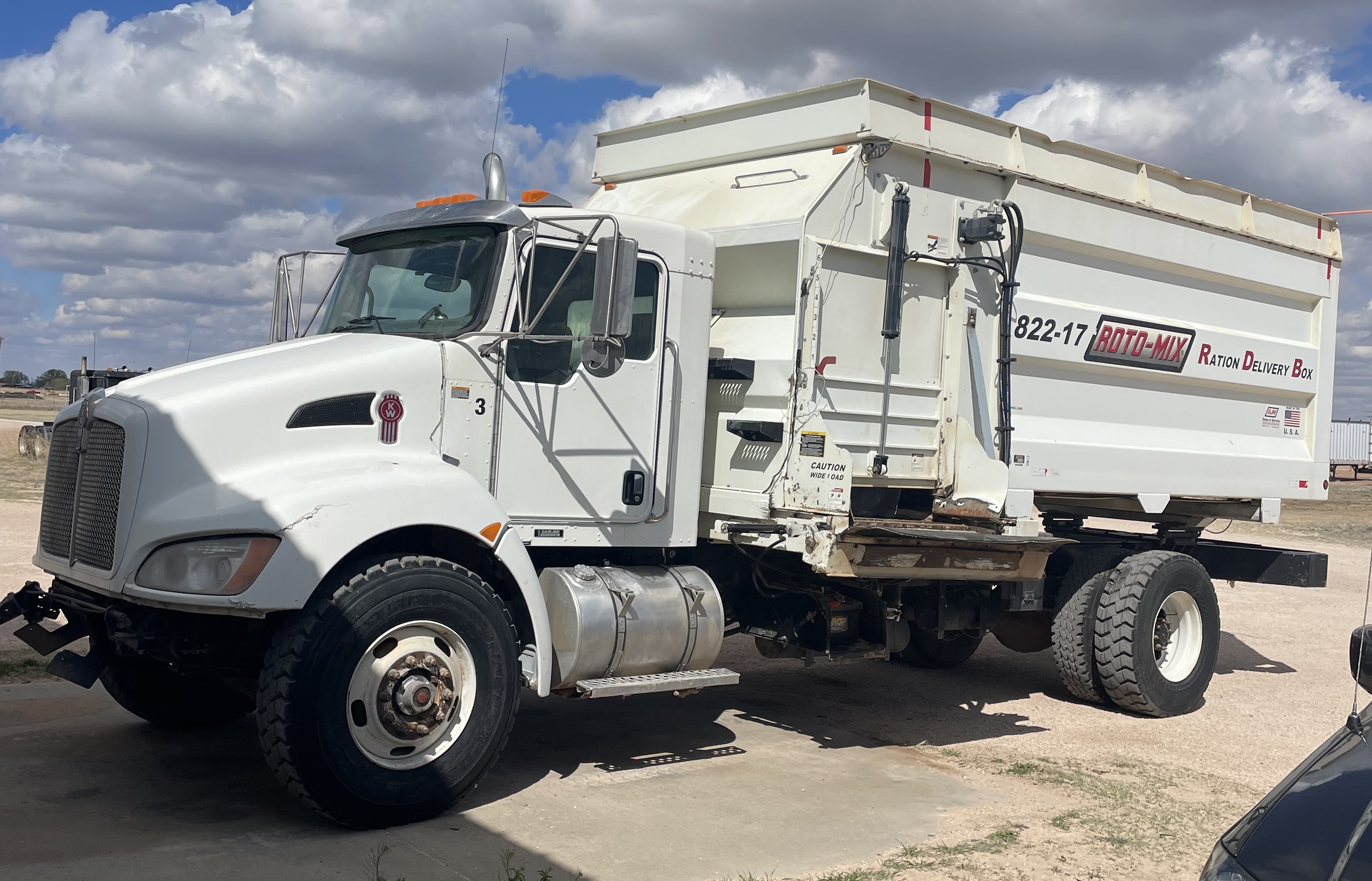Feed Mixer Trucks For Sale: A Comprehensive Buyer’s Guide pickup.truckstrend.com
In the dynamic world of modern agriculture, efficiency, precision, and animal welfare are paramount. For livestock operations, especially dairy and beef farms, the quality and consistency of feed directly impact animal health, productivity, and ultimately, the bottom line. This is where the feed mixer truck emerges as an indispensable piece of machinery. More than just a vehicle, it’s a mobile feed processing unit designed to accurately weigh, thoroughly mix, and efficiently deliver a Total Mixed Ration (TMR) to your livestock.
A feed mixer truck ensures that every bite your animals take is nutritionally balanced, preventing selective eating and optimizing feed conversion. If you’re considering enhancing your feeding program, understanding the ins and outs of "Feed Mixer Trucks For Sale" is crucial. This comprehensive guide will navigate you through the types, benefits, key considerations, and practical advice for acquiring this vital agricultural asset.
Feed Mixer Trucks For Sale: A Comprehensive Buyer’s Guide
Why Invest in a Feed Mixer Truck? The Undeniable Benefits
The decision to invest in a feed mixer truck is often driven by a desire for improved operational efficiency and animal performance. Here are the core benefits:
- Improved Feed Uniformity and Quality: A TMR delivered by a mixer truck ensures that each animal receives a consistent blend of forages, grains, supplements, and minerals. This uniformity prevents sorting by animals, ensuring they consume all necessary nutrients.
- Enhanced Animal Health and Performance: Consistent nutrition leads to better digestive health, reduced metabolic disorders, improved milk production in dairy cows, and faster weight gain in beef cattle. Healthy animals are more productive and require less veterinary intervention.
- Reduced Feed Waste: By precisely mixing ingredients and presenting them in an appetizing, consistent form, animals are less likely to push feed aside or leave portions untouched. This minimizes waste, turning more of your feed investment into animal product.
- Labor and Time Savings: Manual feed mixing is labor-intensive and time-consuming. A feed mixer truck automates much of this process, freeing up valuable labor for other farm tasks and significantly reducing daily feeding time.
- Optimized Nutrition and Cost Control: The integrated weighing systems allow for precise rationing, enabling you to tailor feed formulations to specific animal groups or production stages. This precision optimizes nutrient utilization, potentially reducing overall feed costs by eliminating overfeeding of expensive supplements.
- Flexibility in Feed Formulation: With a mixer truck, you can easily incorporate various feedstuffs, including wet byproducts, silages, hays, and concentrates, into a cohesive diet, adapting to feed availability and price fluctuations.

Types of Feed Mixer Trucks: Finding Your Match
Feed mixer trucks come in various configurations, each suited to different farm sizes, feed types, and operational preferences. Understanding these types is the first step in identifying the right model for your needs.
Based on Mixing Mechanism:

- Vertical Mixers: These utilize one or more vertical augers to lift, tumble, and mix feed ingredients. They are excellent for handling a wide range of materials, including large round or square bales of hay and silage, which they can process directly. Vertical mixers are known for their thorough mixing action and ability to create a fluffy, palatable TMR. They tend to be more forgiving with varying particle sizes.
- Horizontal Mixers: Employing a horizontal auger, paddle, or ribbon system, these mixers typically offer faster mixing times. They are well-suited for operations that primarily use chopped forages, grains, and pre-processed ingredients. Horizontal mixers often create a denser mix and might require feed to be pre-chopped if large bales are used.
Based on Mobility:

- Trailer-Mounted Mixers: These are unpowered units towed by a tractor. They are a popular choice for many farms due to their versatility and often lower initial cost compared to self-propelled units. They rely on the tractor’s PTO (Power Take-Off) for mixing power.
- Self-Propelled Mixers: These units combine the mixer and the truck chassis into one integrated machine, complete with an engine, cab, and drive system. They offer superior maneuverability, speed, and often advanced features like front-mounted loading augers. Self-propelled mixers are ideal for larger operations, farms with multiple feeding locations, or those needing to cover significant distances.
Based on Capacity:
Feed mixer trucks are available in a wide range of capacities, measured in cubic feet (cu ft) or cubic meters (m³).
- Small (150-400 cu ft): Suited for smaller herds or specialized feeding groups.
- Medium (400-800 cu ft): The most common range, suitable for many mid-sized dairy and beef operations.
- Large (800+ cu ft): Designed for very large herds, feedlots, or custom feeding operations.
Key Features and Specifications to Consider When Buying
When looking at feed mixer trucks for sale, delve into the specifics to ensure the machine meets your operational demands.
- Capacity: Match the mixer’s capacity to your herd size and feeding frequency. It’s often better to have slightly more capacity than you think you need to allow for growth or longer feeding intervals.
- Mixing Mechanism (Vertical vs. Horizontal): Revisit your primary feed types. If you frequently use large bales, a vertical mixer might be more efficient. If speed and a dense mix from pre-chopped ingredients are priorities, consider horizontal.
- Discharge System: Common options include side-discharge chutes, front or rear conveyors, and various door configurations. Consider your barn layout, bunk height, and feeding strategy when evaluating discharge options.
- Weighing System: Accuracy is paramount for precise nutrition. Look for robust, reliable load cells and user-friendly display systems. Some advanced systems offer data logging, remote monitoring, and integration with farm management software.
- Power Source: For trailer-mounted units, ensure your tractor has sufficient PTO horsepower. For self-propelled units, evaluate engine power, fuel efficiency, and transmission options.
- Durability and Construction Materials: The mixer experiences significant wear and tear. Look for heavy-duty steel construction, durable liners, and robust components in the augers, paddles, and discharge system. Stainless steel options can extend life, especially for corrosive ingredients.
- Maintenance and Parts Availability: Research the brand’s reputation for reliability and the ease of sourcing replacement parts. A local dealer with good service support can be invaluable.
- Automation and Technology: Modern mixers offer features like programmable recipes, automated ingredient dispensing, and remote controls. These can further enhance precision and ease of operation.
- Condition (New vs. Used): This is a critical decision influencing cost and reliability.
The Buying Process: New vs. Used Feed Mixer Trucks
The choice between a new and used feed mixer truck significantly impacts your budget and long-term considerations.
Buying New:
- Pros: Comes with a manufacturer’s warranty, access to the latest technology and features, full customization options, known maintenance history, and potentially better financing terms. You get the peace of mind of a brand-new machine.
- Cons: Higher upfront cost, and immediate depreciation upon purchase.
- Where to Buy: Authorized dealerships, manufacturer websites, and agricultural equipment shows.
Buying Used:
- Pros: Significantly lower upfront cost, slower depreciation, immediate availability, and a wider range of models and brands to choose from.
- Cons: No warranty (or limited warranty), potential for hidden mechanical issues, wear and tear on components, older technology, and potentially incomplete maintenance records.
- Where to Buy: Agricultural equipment auctions, online marketplaces (e.g., TractorHouse, Farm Machinery Trader, Machinery Pete), local farm equipment dealerships with used inventory, and private sellers.
- Tips for Buying Used:
- Thorough Inspection: Beyond a visual check, inspect augers, liners, discharge mechanisms, tires, chassis, and the weighing system. Look for excessive wear, cracks, or welds.
- Maintenance Records: Request detailed service history. A well-maintained machine is a good sign.
- Test Run: If possible, operate the mixer with some feed to assess its performance, mixing quality, and listen for unusual noises.
- Reputable Seller: Buy from sellers with good reputations. If buying privately, consider getting a professional inspection.
Important Considerations Beyond the Purchase Price
The sticker price is only one part of the total cost of ownership. Factor in these additional considerations:
- Operating Costs: Account for fuel consumption (for self-propelled units or the tractor pulling a trailer mixer), lubricant changes, and routine maintenance items like knives, liners, and filters.
- Training and Operation: Ensure your staff is properly trained on safe and efficient operation, including calibration of the weighing system.
- Service and Support: Proximity to a dealership or service center is crucial for timely repairs and parts.
- Resale Value: Research the resale value of different brands and models. Well-maintained, popular models tend to hold their value better.
- Financing Options: Explore various financing avenues, including bank loans, dealership financing, and equipment leasing programs.
- Farm Size and Specific Needs: Always tailor your choice to your specific operation. A large feedlot’s needs will differ vastly from a small diversified farm.
Practical Advice and Actionable Insights
- Assess Your Needs: Before looking at any listings, clearly define your requirements: herd size, types of feed you’ll use, daily feeding volume, existing equipment (tractors), and budget.
- Set a Realistic Budget: Include not just the purchase price, but also delivery, potential upgrades, and initial maintenance.
- Research Thoroughly: Read reviews, compare specifications across different brands (e.g., Supreme, Jaylor, Kuhn Knight, Penta, Art’s Way), and talk to other farmers about their experiences.
- Inspect Before You Buy: This cannot be stressed enough, especially for used equipment. Don’t rely solely on photos or descriptions.
- Negotiate: Always be prepared to negotiate the price, whether new or used.
- Consider a Demo: If possible, arrange a demonstration of the mixer, ideally on your farm, to see how it performs with your feed and in your environment.
Estimated Price Range for Feed Mixer Trucks For Sale
Prices for feed mixer trucks vary widely based on brand, capacity, features, condition (new vs. used), and market demand. The table below provides estimated ranges for common types. These are for general guidance only and actual prices may differ significantly.
| Type & Mobility | Capacity (Cubic Feet) | Condition | Estimated Price Range (USD) | Key Features/Notes |
|---|---|---|---|---|
| Trailer-Mounted (Vertical) | 200-400 | Used | $15,000 – $40,000 | Smaller herds, good for bales, PTO driven |
| Trailer-Mounted (Vertical) | 400-700 | Used | $30,000 – $70,000 | Mid-sized operations, common choice |
| Trailer-Mounted (Vertical) | 200-400 | New | $40,000 – $70,000 | Warranty, latest features, entry-level new |
| Trailer-Mounted (Vertical) | 400-700 | New | $60,000 – $120,000+ | Standard new purchase, various options |
| Trailer-Mounted (Horizontal) | 300-600 | Used | $20,000 – $55,000 | Faster mixing, good for pre-chopped, PTO driven |
| Trailer-Mounted (Horizontal) | 300-600 | New | $50,000 – $95,000+ | New purchase, efficient for specific feed types |
| Self-Propelled | 500-800 | Used | $70,000 – $150,000+ | Older models, higher hours, potentially more wear |
| Self-Propelled | 800-1200+ | Used | $120,000 – $300,000+ | Larger capacity, advanced features, varying condition |
| Self-Propelled | 500-800 | New | $250,000 – $450,000+ | High initial investment, top-tier performance |
| Self-Propelled | 800-1200+ | New | $400,000 – $750,000+ | Premium models, custom options, for large operations |
Note: These prices are estimates and can fluctuate based on market conditions, specific features, brand reputation, mileage/hours (for used), and geographic location. Always get multiple quotes and inspect thoroughly.
Frequently Asked Questions (FAQ) about Feed Mixer Trucks
Q1: What’s the typical lifespan of a feed mixer truck?
A1: With proper maintenance, a well-built feed mixer truck can last 10-20 years or more. Components like augers, knives, and liners will need replacement over time, but the main structure can endure.
Q2: How often should I service my feed mixer truck?
A2: Follow the manufacturer’s recommended service schedule, typically based on operating hours or calendar intervals (e.g., every 250 hours or annually). Regular greasing, oil changes, and inspection of wear parts are critical.
Q3: Can I mix different types of feed in one truck?
A3: Yes, that’s their primary purpose! Feed mixer trucks are designed to handle a wide array of ingredients, from various forages (silage, hay) to grains, protein supplements, minerals, and liquid additives, blending them into a uniform TMR.
Q4: What’s the difference between vertical and horizontal mixers in terms of feed types?
A4: Vertical mixers excel at handling large, intact bales of hay or silage, breaking them down efficiently. Horizontal mixers often work best with pre-processed or shorter-fiber forages and tend to mix faster, creating a denser ration.
Q5: Is financing available for feed mixer trucks?
A5: Yes, most agricultural equipment dealerships offer financing options, and many banks specialize in agricultural loans. Leasing is another popular option for some operations.
Q6: How do I determine the right capacity for my farm?
A6: Calculate your daily feed requirements based on your herd size and the amount of TMR each animal consumes. Factor in potential herd growth and how many times per day or week you plan to mix feed. It’s often wise to choose a capacity slightly larger than your current needs.
Conclusion
A feed mixer truck is a significant investment, but one that can yield substantial returns in terms of animal health, productivity, and operational efficiency. By providing a consistent, nutritionally balanced diet, you’re not just feeding animals; you’re optimizing their genetic potential and safeguarding your farm’s profitability.
Whether you opt for a brand-new, state-of-the-art self-propelled unit or a well-maintained used trailer mixer, the key lies in thorough research, careful consideration of your specific needs, and a diligent inspection process. Approach "Feed Mixer Trucks For Sale" not just as a purchase, but as a strategic decision that will shape the future of your feeding program and the success of your livestock operation for years to come.



